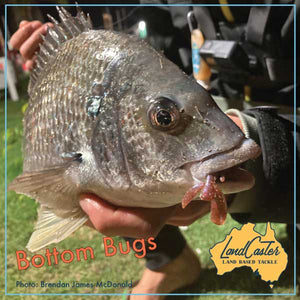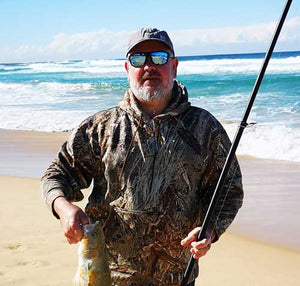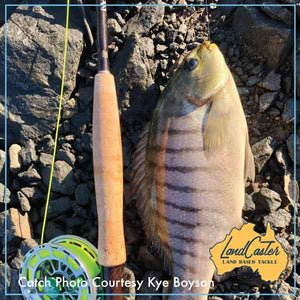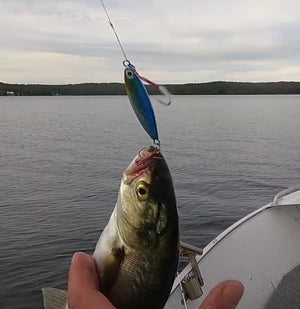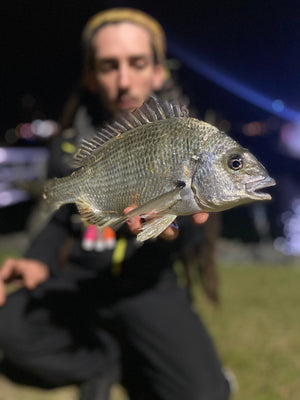Free Shipping Over $70

Essential Tips for Safe Fish Handling and Release: Protecting Our Marine Life
Essential Tips for Safe Fish Handling and Release: Protecting Our Marine Life Fishing, for many, is not just a pastime but a passionate endeavour that connects us to nature. The essence of this connection demands respect not just for the thrill of the catch but for the fish themselves. The manner in which we handle and release fish can significantly influence their survival making it essential for every angler, whether beginner or seasoned, to equip themselves with knowledge and the right techniques.
Fish Sensitivity and the Impacts of Mishandling Fish are complex creatures with intricate biological systems that can be easily disturbed by improper handling. Being aware of the sensitive aspects of a fish’s anatomy is the first step toward ethical and responsible angling.
Metal Lip Grips: While metal lip grips might seem sturdy and effective they can come with significant drawbacks. The primary concern is their low surface contact which intensifies the pressure on a small area of the fish's mouth. This can lead to punctures, tears, or even broken jaws. it is very easy to crush or cut the mouth of fish with these if improperly applied. The mouth of predatory fish are prone to being damaged and some fish have evolved with protections surrounding this. However, carelessly closing the jaws on lip grip tools can result in irreparable damage.
Plastic Lip Grips: A safer alternative to metal are plastic lip grips. These plastic lip grips offer a broader contact surface which disperses the pressure more evenly. it is less likely to crush bones or cut ligaments and other sensitive tissue.
Thumb Sleeves and Fishing Gloves: Essential for a safe grip especially when dealing with fish with sharp teeth or slippery scales. However, even with these tools, certain species, like sharks, should be approached with caution. Stay clear of sharks' teeth. A shark, especially small sharks, can bite their own tail. If you hold a shark by the tail it can also bite you!
Danger in the Waters Releasing fish requires not only ensuring the safety of the fish but also the angler, especially in waters inhabited by potential predators.
Sharks: Sharks have an attraction to struggling fish and sharks often approach boats when they detect a catch. Here are some precautions to keep in mind:
Guardians of the Future: Teaching Young Anglers Respect The practices we adopt today shape the world of tomorrow. Teaching children and young anglers these vital practices is paramount. It's about understanding the life at the end of the line – its fragility, its significance, and its right to be treated with care and respect. By instilling these values in our children, we ensure that our waters remain abundant, our ecosystems vibrant, and our fishing traditions, rich and humane, for generations to come.
Fish Sensitivity and the Impacts of Mishandling Fish are complex creatures with intricate biological systems that can be easily disturbed by improper handling. Being aware of the sensitive aspects of a fish’s anatomy is the first step toward ethical and responsible angling.
- Mouth Injuries: Using tools with sharp or thin edges such as metal lip grips can cause serious injuries to a fish’s mouth leading to infections or impairing its ability to feed.
- Gill Damage: Placing hands inside the gills can be devastating. Gills are vital for respiration and any damage or interference can be life-threatening.
-
Slime Coat: The slime coat is a protective barrier covering a fish’s body crucial for warding off infections and parasites. Mishandling the slime coat can lead to serious health problems for the fish. Some practices to avoid include:
- Avoiding Hot Concrete: Never lay fish on hot surfaces, especially concrete. This can not only harm their delicate skin and scales but also severely damage their slime coat.
- No Stepping: Stepping on a fish to remove a hook can cause internal injuries and strip away the protective slime coat.
- Gut Hooked Fish: If a fish is gut hooked, rather than attempting a harmful extraction it’s better to cut the hook as far inside as possible causing minimal disturbance.
- Use Wet Towels: For handling larger fish consider using a wet towel. This practice provides a barrier between your hands and the fish helping to preserve the slime coat.
Metal Lip Grips: While metal lip grips might seem sturdy and effective they can come with significant drawbacks. The primary concern is their low surface contact which intensifies the pressure on a small area of the fish's mouth. This can lead to punctures, tears, or even broken jaws. it is very easy to crush or cut the mouth of fish with these if improperly applied. The mouth of predatory fish are prone to being damaged and some fish have evolved with protections surrounding this. However, carelessly closing the jaws on lip grip tools can result in irreparable damage.
Plastic Lip Grips: A safer alternative to metal are plastic lip grips. These plastic lip grips offer a broader contact surface which disperses the pressure more evenly. it is less likely to crush bones or cut ligaments and other sensitive tissue.
Thumb Sleeves and Fishing Gloves: Essential for a safe grip especially when dealing with fish with sharp teeth or slippery scales. However, even with these tools, certain species, like sharks, should be approached with caution. Stay clear of sharks' teeth. A shark, especially small sharks, can bite their own tail. If you hold a shark by the tail it can also bite you!
Danger in the Waters Releasing fish requires not only ensuring the safety of the fish but also the angler, especially in waters inhabited by potential predators.
Sharks: Sharks have an attraction to struggling fish and sharks often approach boats when they detect a catch. Here are some precautions to keep in mind:
- Be Alert: Always be aware of your surroundings, especially in known shark-infested waters.
- Avoid Holding Fish Overboard: Minimize the time the fish is held over the side to deter attracting sharks.
- Use Tools: Use dehooking tools to minimize handling time and release the fish more efficiently.
- Safety in Numbers: Whenever possible, have someone keep a lookout while another person is releasing the fish.
- Stay Informed: Understand the local marine life and their behaviours.
Guardians of the Future: Teaching Young Anglers Respect The practices we adopt today shape the world of tomorrow. Teaching children and young anglers these vital practices is paramount. It's about understanding the life at the end of the line – its fragility, its significance, and its right to be treated with care and respect. By instilling these values in our children, we ensure that our waters remain abundant, our ecosystems vibrant, and our fishing traditions, rich and humane, for generations to come.

